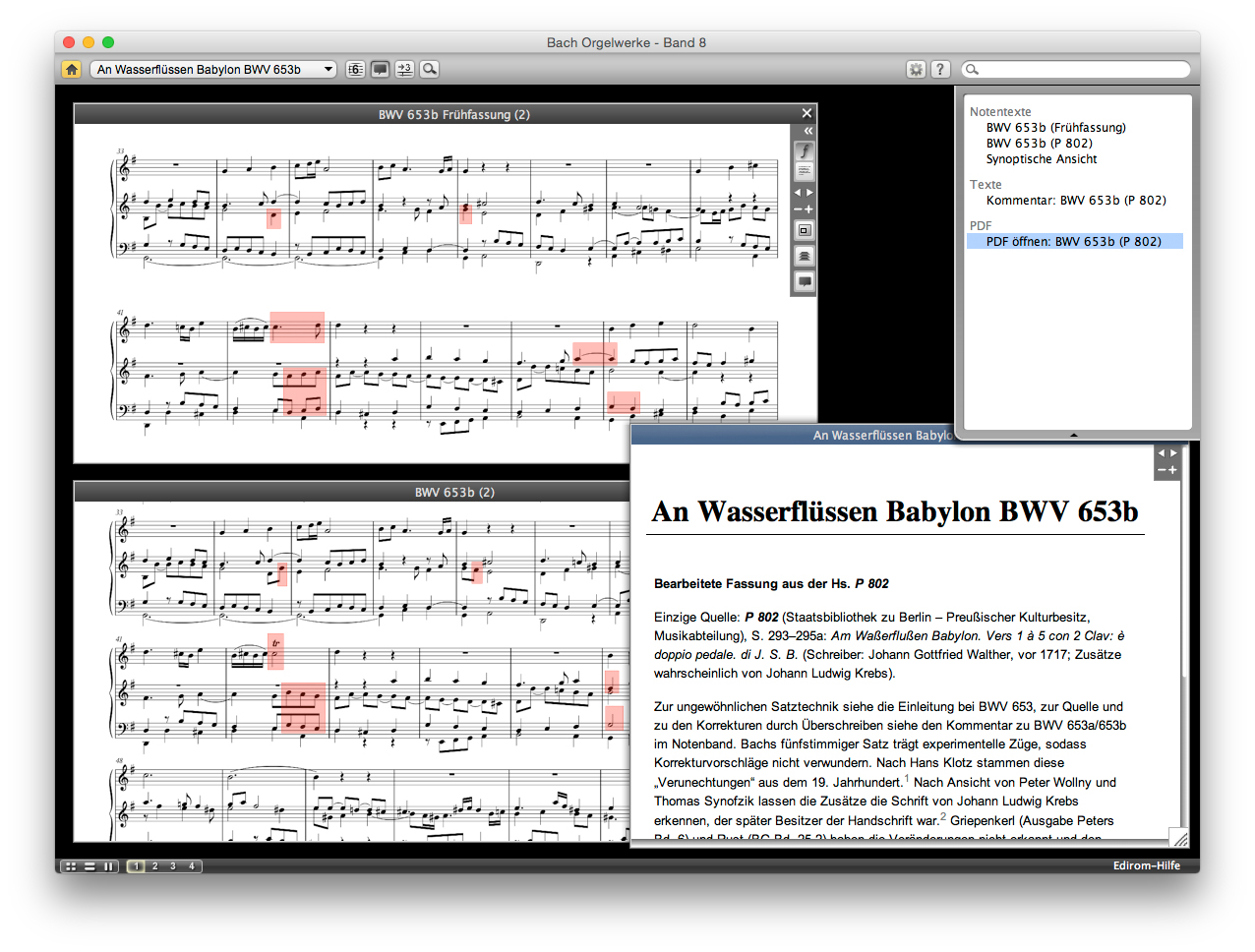
Bach Complete Organ Works – New Edition in 10 Volumes

Blog Werke Verzeichnis: Bringing bits and pieces together
Johann Sebastian Bach being every organist’s bread and butter, you can imagine how Breitkopf & Härtel’s Complete Edition of Organ Works was greeted by organ scholars and practicians back in 1967. Yes, another complete collection. Would it be an incompletely complete version with scholarly apparatus? Or, much more worrisome, a completely incomplete version with adaptations of keyboard and string works? Pieces envisioned for practical music-making or for study?
What about a mixture of both concepts for the discerning organist in search of rewarding music for the hands, the feet and the mind? This was the concept selected by Breitkopf & Härtel and its Bach specialist Heinz Lohmann. Forty years later, it was time for the Bach Blogger to see what had become of these lofty goals.
Urtext – The little word that could
There can hardly be a more ideal publisher for the music of J. S. Bach than Breitkopf & Härtel, which was already corresponding with the master back in the early 1700s. As I scratched the surface of the various definitive editions of the organ works, I kept running into a shimmering, shape-shifting, iridescent concept that seemed to promise instant musicological respectability: Urtext. Back to the origins? Yes and no...
More than 40 years after the “Lohmann,” it was time for a new edition of the organ works that would bear the designation “Urtext”. The volumes spread through churches and concert halls, filling students’ satchels and Bach seminars. My mission was akin to catching a butterfly; yet I remained determined to find out why the world needs new editions of Bach’s works about every 30/40 years.
Turning the page on past editions

At the core of the new edition are enticing fragments, Sherlockian speculations, mystery works, exhilarating intellectual discussions, as well as accurate interpretations and solid findings. Another word was knocking at the door of Bach & Blogosphere, the “clavier”, understood here as a keyboard piece with pedal. Indeed, the miscellany crowding into this book promises thumbs-up / thumbs-down adventures for Pluto-like pieces that had long been staples of the Bach oeuvre. Now, like Pluto, some of these pieces had to relinquish their status as authorized works. On the other hand, authentic early pieces were reconstructed and made playable.

JSB’s GPS: CD-ROM to the rescue
As an organist, yours truly loves to choose and combine, but he knows his limits, too – and they’re somewhere around the intersection of plausibility and excess. Overwhelmed, he calls CD-ROM to the rescue, or, more specifically, the EDIROM system, which applies 21st-century editorial techniques to 18th-century music, a. o.
The new Breitkopf edition invites the Bachian experimenter to make revealing synoptical illustrations of fragments and sketches, works and movements – whatever J.S. Bach left behind in any state of completion. This is where you’ll find your Bach Blogger preparing versions for recitals or interludes – all with the informative commentaries, source evaluations and text-critical information that are now part and parcel of the “Breitkopf Urtext” editions.
The flesh and blood behind the scenes of the complete organ works
The task is enormous – but so is their competence: Werner Breig (Erlangen), Pieter Dirksen (Culemborg/Netherlands), Reinmar Emans (Bochum) a.o. bring rock-solid expertise to this project. Other, proven experts with specialized knowledge of Bach’s organ music – Sven Hiemke (Hamburg), David Schulenberg (Boston) and Jean-Claude Zehnder (Basel), for example – were assigned specific volumes or works. So while we enjoy the new P.E.P. in the B.W.V., we’re pretty sure that someone – perhaps still in diapers today – will discover a new approach to Bach’s organ works.
We would like to welcome you at the AGO convention in Houston. Come and see us at booth 409, browse through plenty of new editions and focus your attention on our new Bach organ works.
Contact:
Annekathrin Mascus
Head of Sales
sales@breitkopf.com
